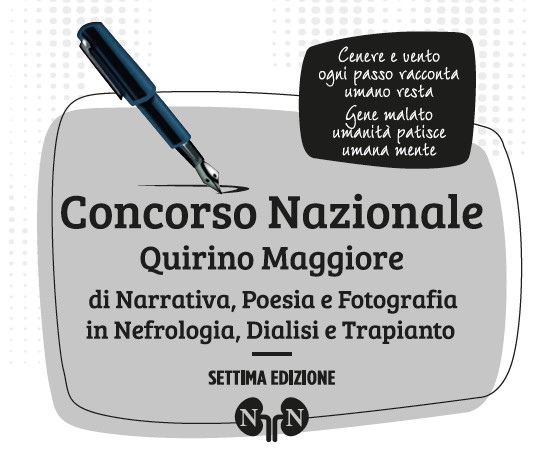Most read articles by the same author(s)
- Andrea Cavalli, Giuseppe Pontoriero, Is it possible to reduce infectious complications in CVC for dialysis? If so, how? , Giornale di Clinica Nefrologica e Dialisi: Vol. 26 No. 1 (2014): January-March 2014
- Andrea Cavalli, Giuseppe Pontoriero, Mortality in Hemodialysis Patients: Predict and (Trying to) Reduce it , Giornale di Clinica Nefrologica e Dialisi: Vol. 28 No. 1 (2016): January-March 2016
- Monica Limardo, Giuseppe Pontoriero, Etelcalcetide: A New Intravenous Calcimimetic for the Treatment of Secondary Hyperparathyroidism in Haemodialysis Patients , Giornale di Clinica Nefrologica e Dialisi: Vol. 29 No. 1 (2017): January-March 2017
- Andrea Cavalli, Giuseppe Pontoriero, Dealing with hypertension in hemodialysis patients , Giornale di Clinica Nefrologica e Dialisi: Vol. 27 No. 1 (2015): January-March 2015
- Monica Limardo, Giuseppe Pontoriero, Dialysis and Pregnancy: New Perspectives? , Giornale di Clinica Nefrologica e Dialisi: Vol. 28 No. 2 (2016): April-June 2016
- Andrea Cavalli, Maria Carmen Luise, Giuseppe Pontoriero, Any News in Potassium Management? , Giornale di Clinica Nefrologica e Dialisi: Vol. 29 No. 3 (2017): July-September 2017
- Francesco Rastelli, Maria Carmen Luise, Giuseppe Pontoriero, Treating inflammation to improve outcome in dialysis patients , Giornale di Clinica Nefrologica e Dialisi: Vol. 29 No. 4 (2017): October-December 2017
- Andrea Cavalli, Maria Carmen Luise, Giuseppe Pontoriero, Any news in Kidney Transplantation? , Giornale di Clinica Nefrologica e Dialisi: Vol. 28 No. 4 (2016): October-December 2016
- Selena Longhi, Giuseppe Pontoriero, Atypical Hemolytic-Uremic Syndrome: From Pathogenesis to Therapy , Giornale di Clinica Nefrologica e Dialisi: Vol. 28 No. 3 (2016): July-September 2016
- Andrea Cavalli, Giuseppe Pontoriero, The EVOLVE Study: Another Disappointment for Nephrologists? , Giornale di Clinica Nefrologica e Dialisi: Vol. 25 No. 3 (2013): July-September 2013











